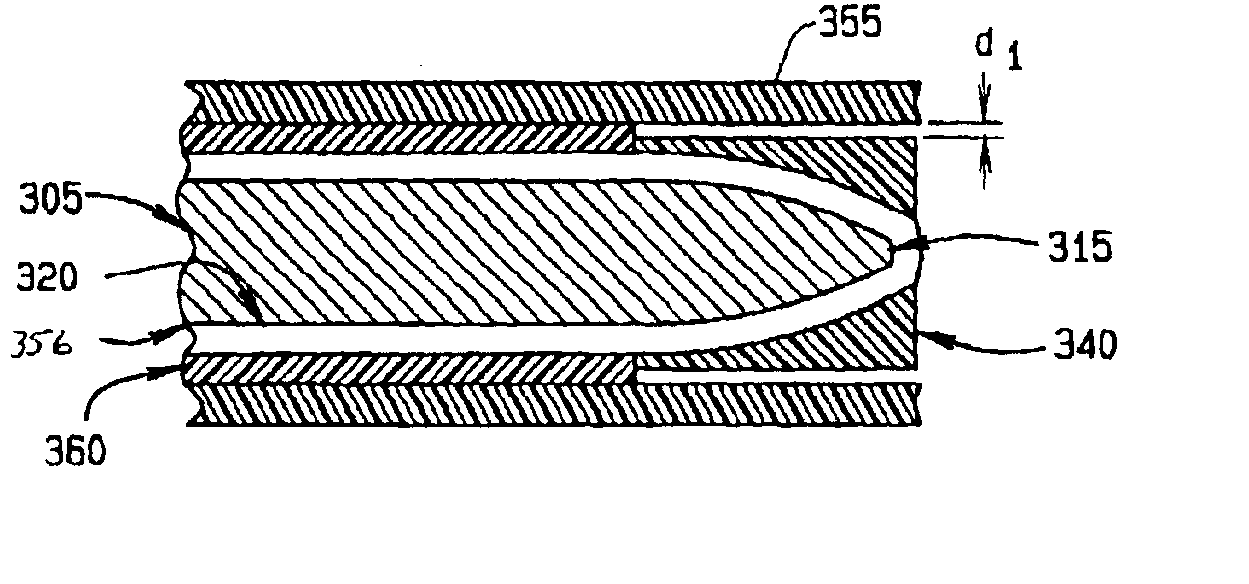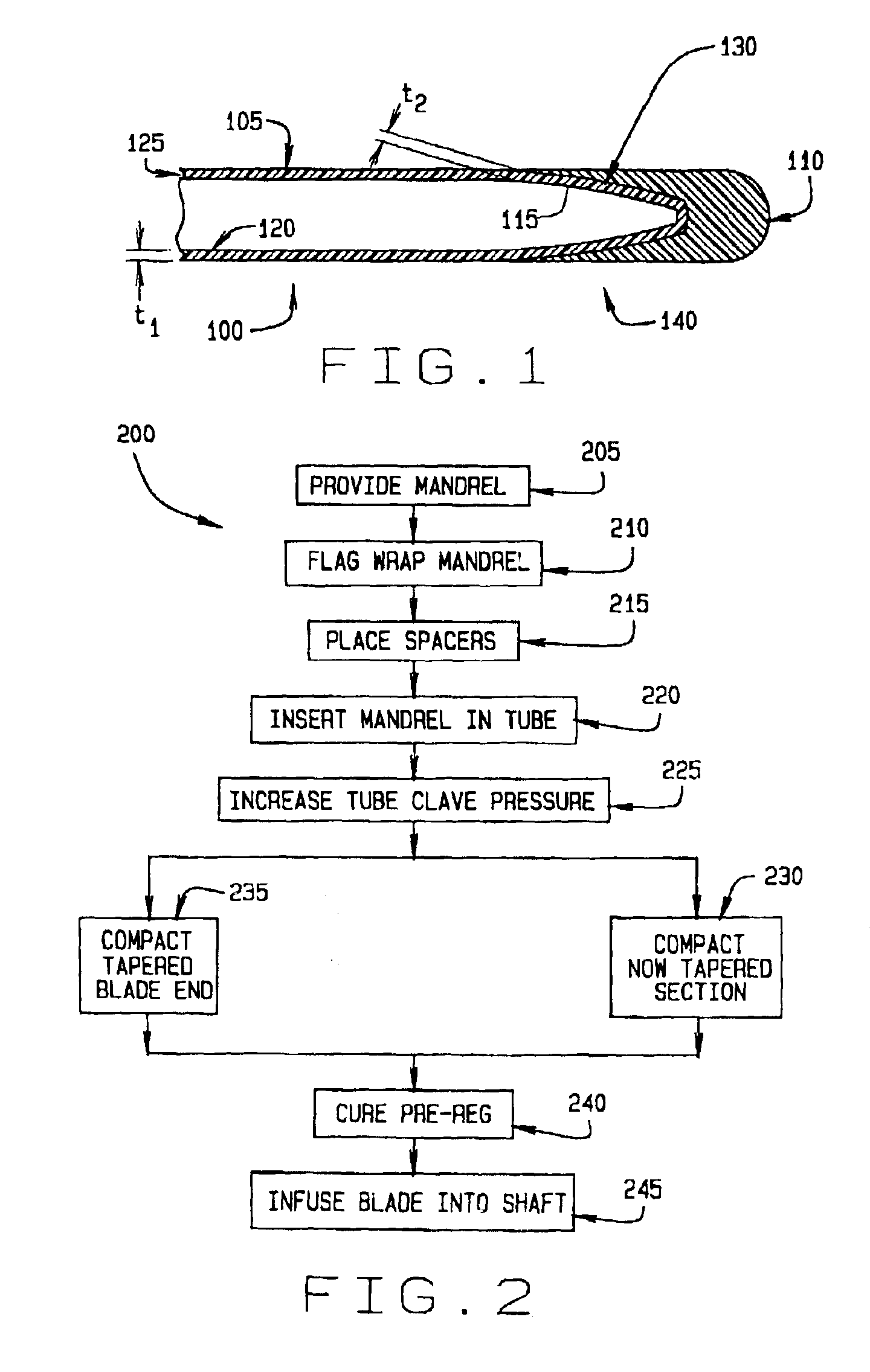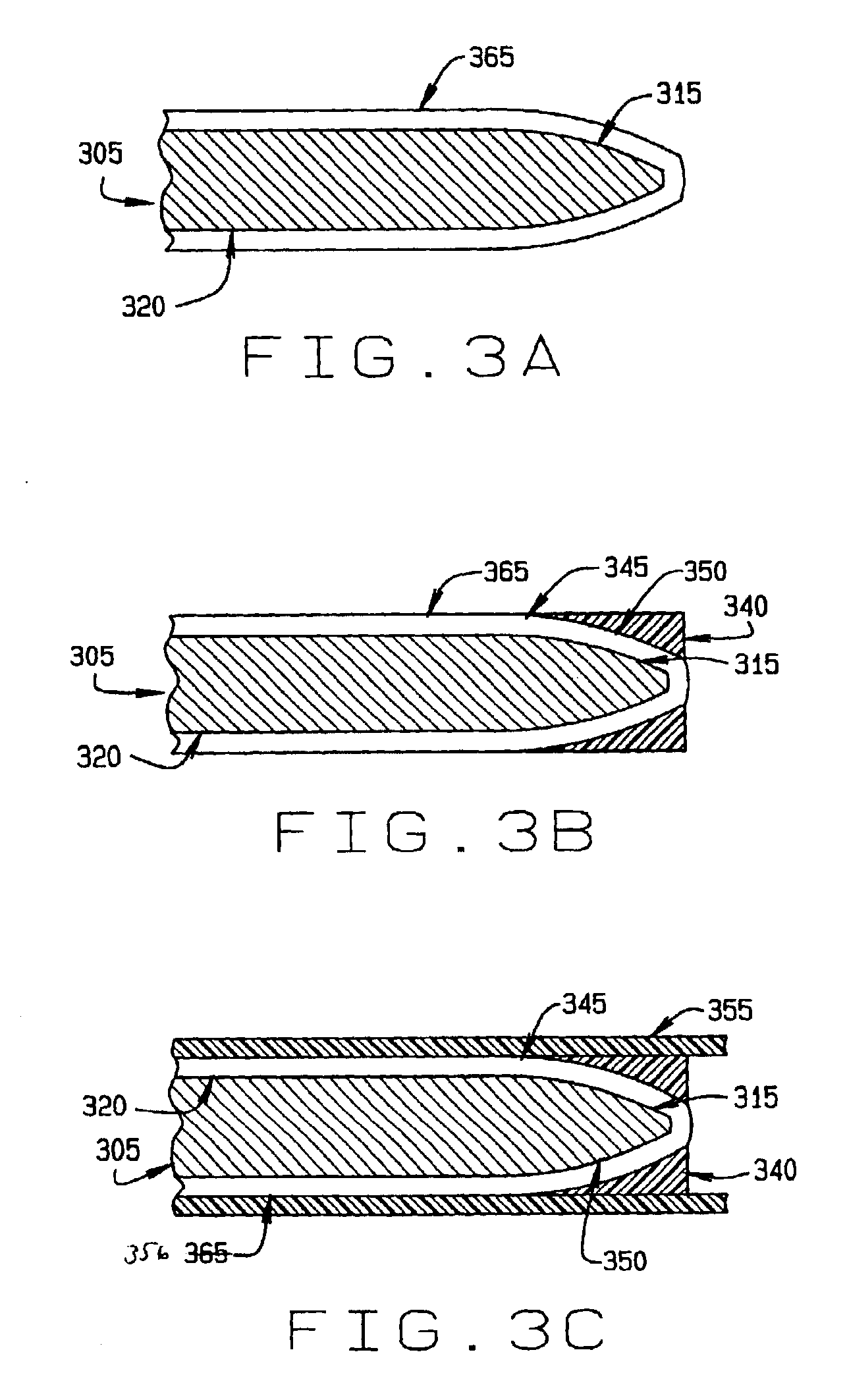Method of forming a one piece hockey stick
a one-piece, hockey stick technology, applied in the field of one-piece hockey stick formation, can solve the problems of adverse effects of sanding and painting the joint, adverse effects of mechanical joints on the flex and mechanical integrity of prior art hockey sticks, and inability to mitigate these adverse effects
- Summary
- Abstract
- Description
- Claims
- Application Information
AI Technical Summary
Problems solved by technology
Method used
Image
Examples
Embodiment Construction
[0019]The following description of the preferred embodiments is merely exemplary in nature and is in no way intended to limit the invention, its application, or uses.
[0020]With reference to FIG. 1 a hockey stick 100 per the present invention is shown. The stick has a shaft 105 and a blade 110 (shown extending vertically from the page). The shaft 105 has a tapered blade end 115 where the shaft 105 to blade 110 transition 140 occurs. The shaft also has a non tapered section 120 generally extending to a grip end (not shown) for handling the stick 100. A carbon and Kevlar composite may be used, for example, to form a thin wall 125 of the shaft 105.
[0021]More particularly, the thin wall 125 has a tapered blade end and a non tapered section coincident with those of the shaft 105. Both the non tapered section 120 and the tapered blade end 115 have been compacted during manufacture. The amount by which the non tapered section 120 and the tapered blade end 115 are compacted may differ. Accor...
PUM
| Property | Measurement | Unit |
|---|---|---|
| Pressure | aaaaa | aaaaa |
| Diameter | aaaaa | aaaaa |
Abstract
Description
Claims
Application Information
 Login to View More
Login to View More - R&D
- Intellectual Property
- Life Sciences
- Materials
- Tech Scout
- Unparalleled Data Quality
- Higher Quality Content
- 60% Fewer Hallucinations
Browse by: Latest US Patents, China's latest patents, Technical Efficacy Thesaurus, Application Domain, Technology Topic, Popular Technical Reports.
© 2025 PatSnap. All rights reserved.Legal|Privacy policy|Modern Slavery Act Transparency Statement|Sitemap|About US| Contact US: help@patsnap.com



